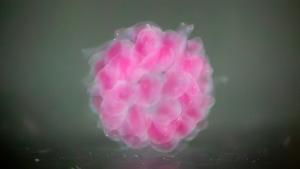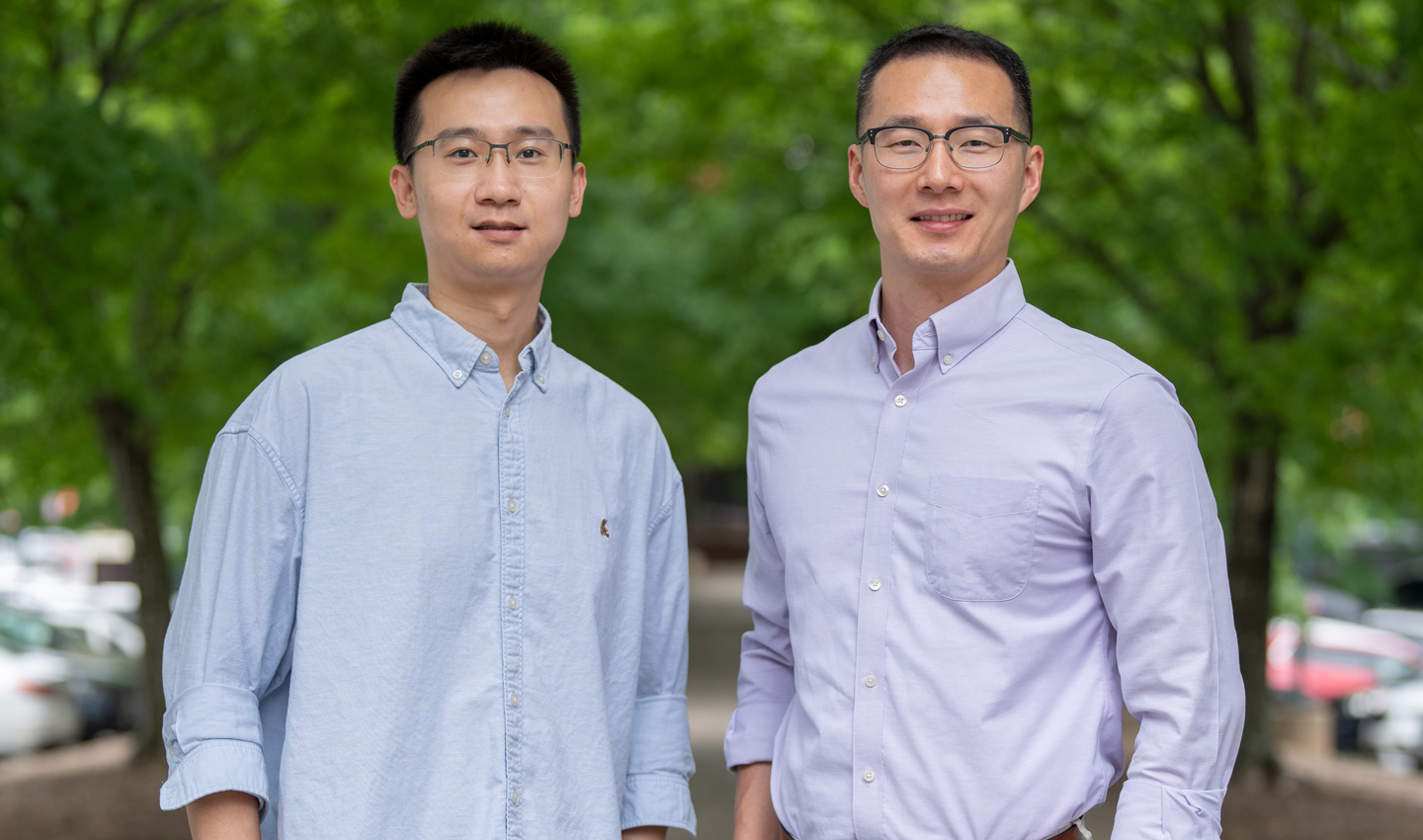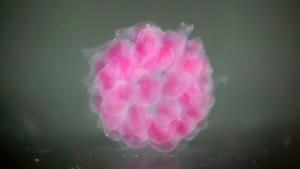
A research team at the University of Virginia School of Engineering and Applied Science has developed what it believes could be the template for the first building blocks for human-compatible organs printed on demand.
Liheng Cai, an assistant professor of materials science and engineering and chemical engineering, and his Ph.D. student, Jinchang Zhu, have made biomaterials with controlled mechanical properties matching those of various human tissues.
“That’s a big leap compared to existing bioprinting technologies,” Zhu said.
They published the results Saturday in Nature Communications.
Their unique bioprinting method is called digital assembly of spherical particles. This “DASP” technique deposits particles of biomaterial in a supporting matrix, both of which are water-based, to build 3D structures that provide a suitable environment for the cells to grow. The assembly process is how “voxels,” the 3D version of pixels, construct 3D objects.
“Our new hydrogel particles represent the first functional voxel we have ever made,” Zhu said. “With precise control over mechanical properties, this voxel may serve as one of the basic building blocks for our future printing constructs.
“For example, with this level of control, we could print organoids, which are 3D cell-based models that function as human tissue, to study disease progression in the search for cures.”

Sturdy and Cell-Friendly
The particles are polymer hydrogels engineered to mimic human tissue by tweaking the arrangement and chemical bonds of single-molecule monomers, which link together in chains to form networks.
Encapsuled within the particles are actual human cells.
Compared to other hydrogel bio-inks, Cai and Zhu’s are less toxic and more biocompatible for cells, they said. Their “double network” hydrogels — formed from two intertwined molecular networks — are mechanically strong, but highly tunable for mimicking the physical characteristics of human tissue.
Cai and Zhu first described their DASP technology in 2021 in Advanced Functional Materials. That work proved the concept of using biomaterial voxels as building blocks and, through lab experiments, demonstrated a DASP-printed material that functioned like a pancreas with glucose-stimulated insulin release.
But DASP 1.0 could only print brittle hydrogels with limited tunability. In their latest paper in Nature Communications, Cai and Zhu present DASP 2.0, which introduces the double-network hydrogel bio-inks formed using a “click chemistry” to rapidly cross-link, or bond, the molecular structures.
The Right Printer for the Job
Part of what enabled this advancement was improvements to the team’s bioprinter. They designed a multichannel nozzle to mix the hydrogel components on demand. Premixing isn’t possible because the cross-linking occurs so fast, going from liquid droplets to an elastic water-swollen gel within 60 seconds.
In previous studies, the team determined that drop formation and rapid detachment from the nozzle are essential to mimic the mechanical properties — such as elasticity or stiffness — of the target human tissue.
DASP achieves this by depositing large droplets from a narrow and fast-moving nozzle into the matrix, immediately suspending them.
“Precise manipulation of viscoelastic voxels represents both a fundamental and technological challenge in soft matter science and 3D bioprinting,” Cai said in 2022, when they published their second paper on DASP.
“We’ve now laid the foundation for voxelated bioprinting,” he said. “When fully realized, DASP’s applications will include artificial organ transplant, disease and tissue modeling, and screening candidates for new drugs. And it probably won’t stop there.”
Publication
“Voxelated bioprinting of modular double-network bio-ink droplets” is published in Nature Communications. Also contributing were Yi He, a Ph.D. student in the Department of Surgery, and Yong Wang, research associate professor of surgery, both of the UVA School of Medicine.
Funding for this research was provided by the National Science Foundation, the UVA LaunchPad for Diabetes, the UVA Coulter Center for Translational Research, Juvenile Diabetes Research Foundation, Virginia’s Commonwealth Health Research Board and the UVA Center for Advanced Biomanufacturing.
